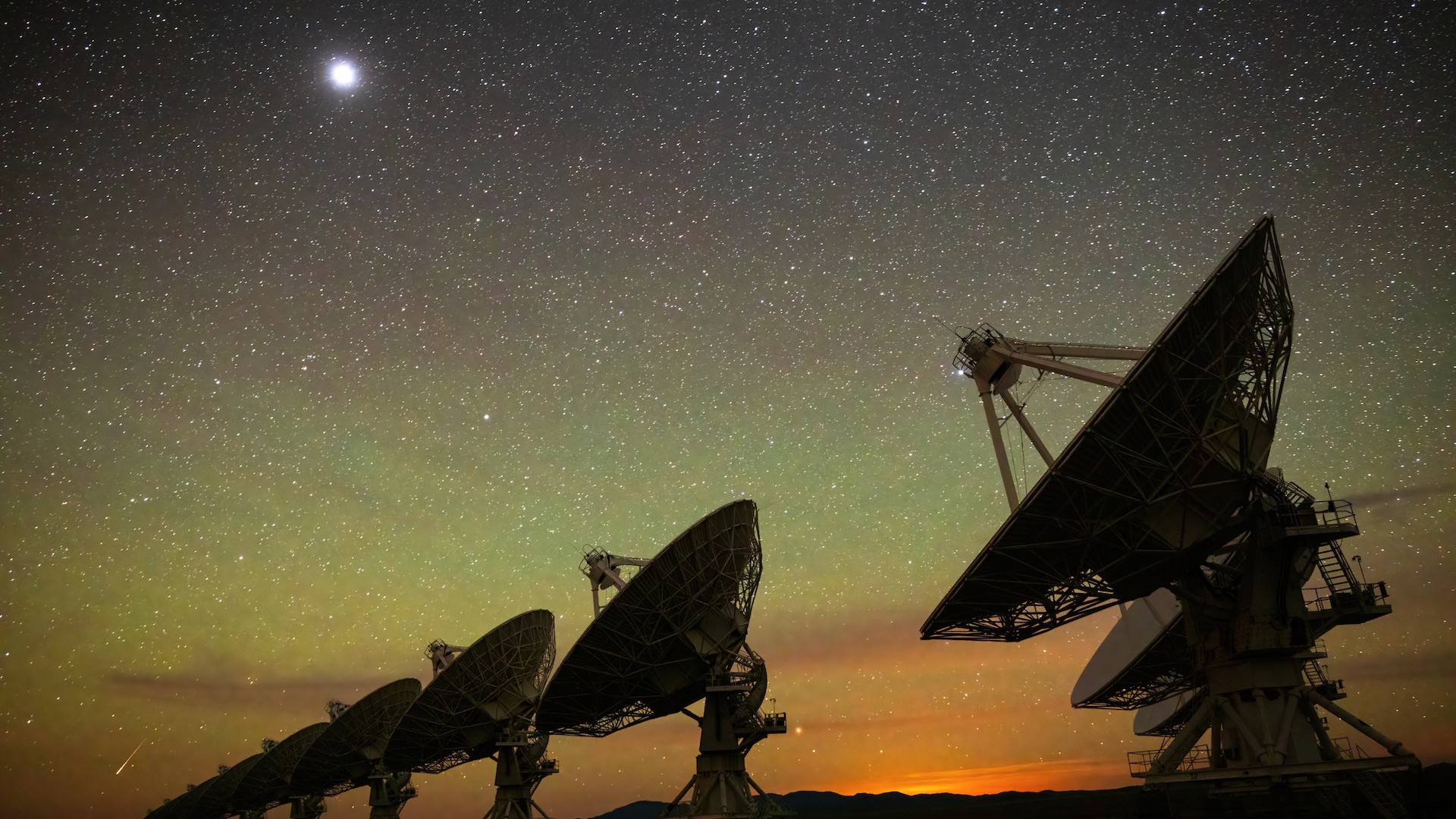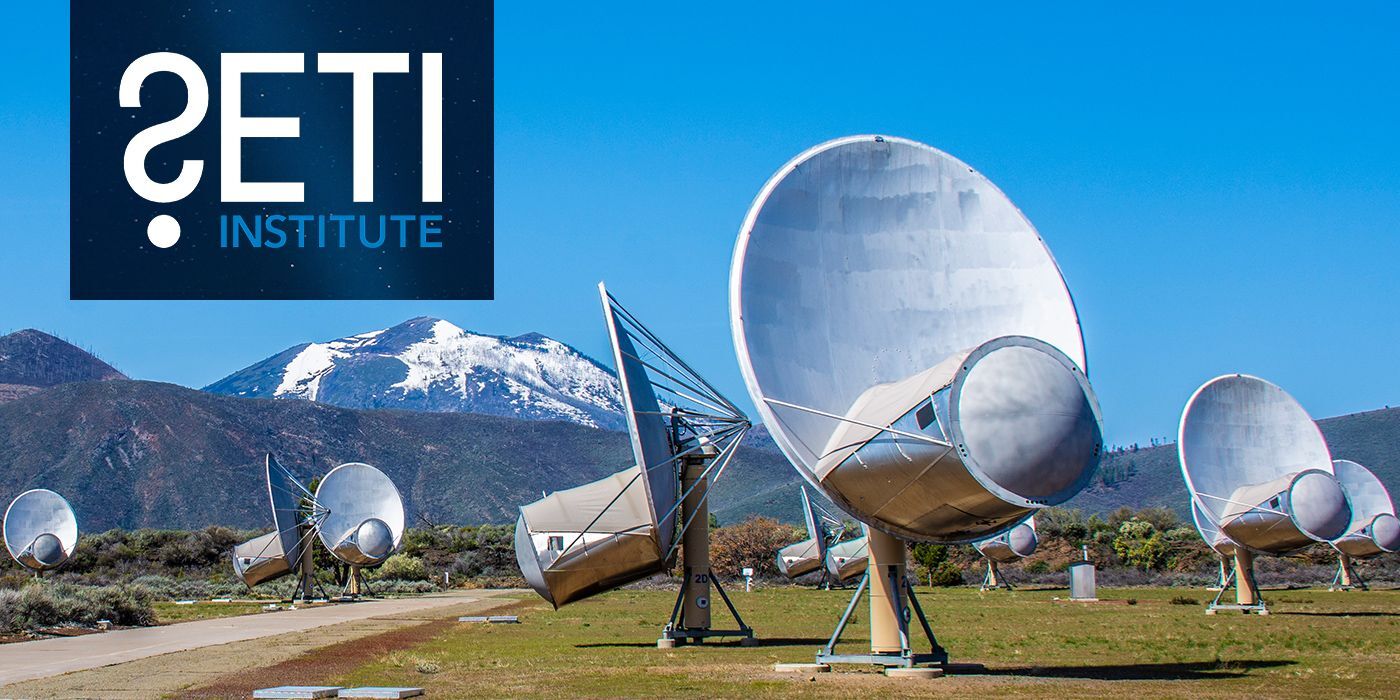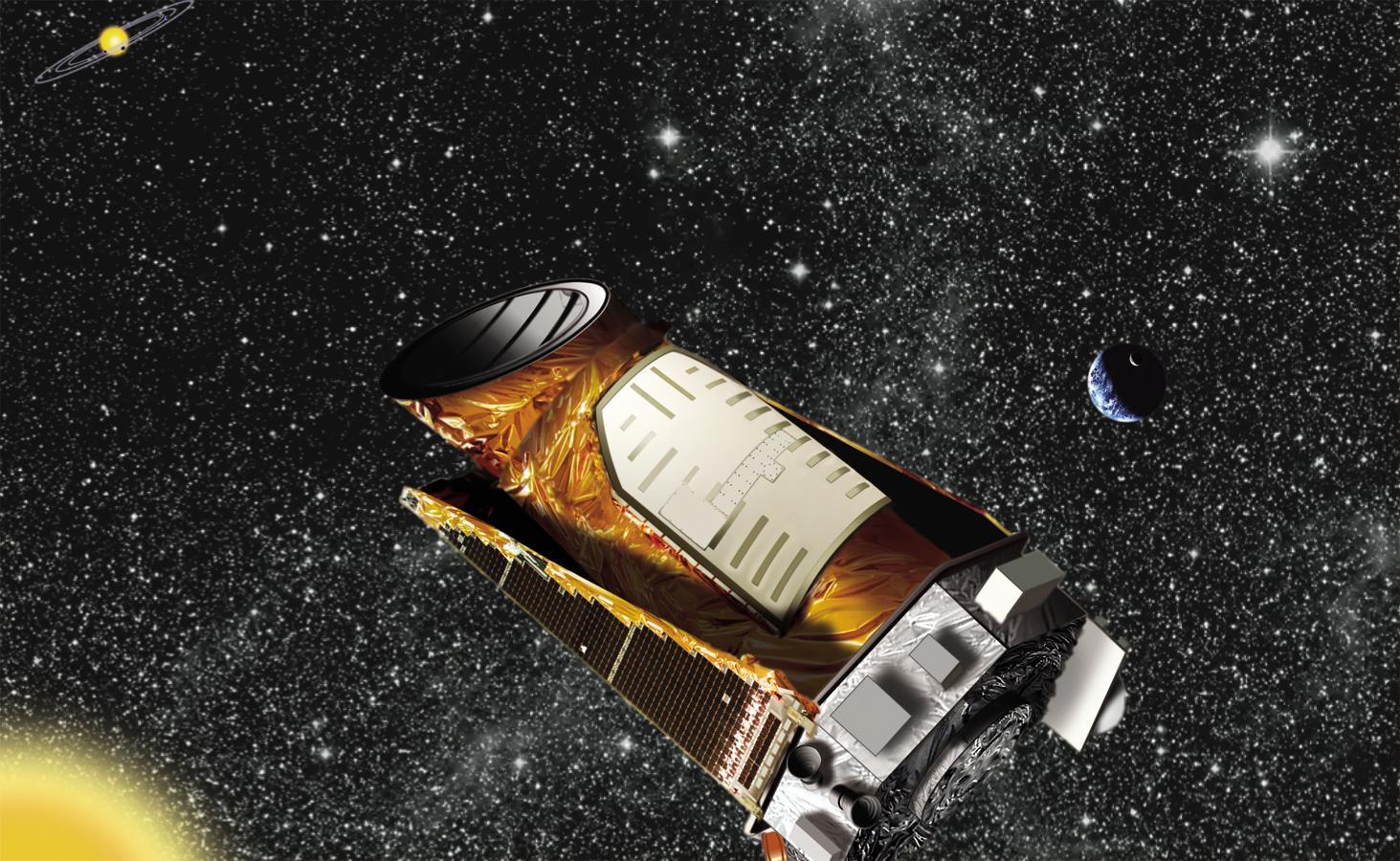
To spot potential intelligent life out there in the great beyond, first you must cast a net wide by using an array of techniques and technologies.
Any "fishing expedition" for E.T. includes close-in studies of life in extreme environments right here on Earth, to help us recognize any signatures we might find on Mars or deep diving through the icy shell of Jupiter's moon, Europa. The search can also blend in the use of space-based telescopes to inspect Earth-like planets circling their home stars. Then there's cupping a proverbial ear to the cosmos using radio telescopes to pick up any bustling interstellar civilization or perhaps look for far-off laser-pulsed communiqués from extraterrestrial homebodies.
These and other efforts are actively pursued by the SETI Institute in Mountain View, California, right there in the high-tech heartbeat of Silicon Valley. More than a hundred institute scientists are busily carrying out research in astronomy and astrophysics, astrobiology, as well as exoplanets, climate and bio-geoscience and the Search for Extraterrestrial Intelligence (SETI).
Related: SETI scientists begin huge new hunt for intelligent aliens
Space.com caught up with Bill Diamond, President and CEO of the SETI Institute for an exclusive, mind-stretching close-encounter discussion regarding the mounting evidence for extraterrestrial intelligence.
Spoiler alert! It's not that old tried, true and tired query "are we alone?" Rather, it's more like "just how crowded is it?"
Early stages
There's a lot going on today in terms of searching for and trying to understand potential extraterrestrial life in the universe, Diamond said.
"Much of the first several decades of SETI, the effort has been quite minimal, looking with fairly 'insensitive' instruments in fairly narrow parts of the radio spectrum in random parts of the sky. So hardly anything that could be considered a comprehensive endeavor," said Diamond.
But even today, in many ways, SETI work is still in the early stages. However, more and more is taking place with an increasing number of instruments and technologies around the world. "There's an extensive and expanded effort ongoing now," Diamond said.
COSMIC collaboration
For example, there's the Commensal Open-Source Multimode Interferometer Cluster Search for Extraterrestrial Intelligence — mercifully shortened to COSMIC SETI.
All 27 antennas that constitute the Very Large Array (VLA) in New Mexico have been outfitted with new gear to perform 24/7 SETI observations under a collaboration between the SETI Institute and the National Radio Astronomy Observatory, the group that operates the VLA.
Yes, that's the same VLA showcased in the 1997 sci-fi film "Contact," replete with actress Jodie Foster adorned with a tight-fitting stereo headset. In reality, the VLA was never used for SETI, Diamond noted, but now it is.

Detectable signatures
"COSMIC is really the most comprehensive SETI search on a single instrument in history. That's very exciting," Diamond said, and gives the COSMIC effort access to a complete and independent copy of the data streams from the entire VLA.
COSMIC will analyze data for the possible presence of "technosignatures" - detectable signatures and signals that shout out the presence of distant advanced civilizations.
In scientific circles, technosignatures are viewed as a subset of the far more established search for "biosignatures" — evidence of microbial or other primitive life loitering on some of the billions of exoplanets we now know exist.
Newly augmented
"For classical radio SETI, there's more going on now around the world than there has ever been," Diamond said. That uptick also includes the SETI Institute's newly augmented Allen Telescope Array situated northeast of San Francisco. It was named after Paul Allen, co-founder of Microsoft, given his generous financial backing of the facility in its early phases.
The Allen Telescope Array (ATA) has undergone antenna redesign and now is outfitted with high-end computers, signal processors, and other electronics making it far faster than ever before, Diamond adds. "The instrument is performing at a level that it has never performed at since it was built. All of that is fairly new in the two to three years."
One output from ATA has been its use by SETI Institute scientists to delve into powerful Fast Radio Bursts (FRBs), a head-scratching phenomenon wanting of explanation.
Philanthropic gift
A passionate booster in ATA's overhaul was Franklin Antonio, a co-founder of Qualcomm, a communications chip company. Antonio's support as an institute technical advisor continues with his philanthropic gift to the SETI Institute of $200 million after his passing last May.
That bequest is sparking an action plan that will enhance the institute's multi-disciplinary, multi-center research, education and outreach make-up, Diamond said.
Also on the institute's agenda is taking in and evaluating ideas from SETI researchers anywhere in the world to tap into a pool of money for such things as technology, software, or to run an experiment.
"If we like what you're doing, we'll fund it," Diamond said. "We will kind of take the place of NASA for the time being as the only place in the world where you can submit a proposal to do SETI work."
Those three words
Roll back time to Columbus Day in 1992 when NASA initiated a formal, more intensive, SETI program. But less than a year later, Congress short-circuited the program.
Is it time for the government to re-embrace the search for extraterrestrial intelligence?
"Yes, absolutely," Diamond responded. NASA, he said, has a trio of science questions it's spearheading: How does the Universe work? How did we get here? Are we alone?
Almost every time NASA leadership publicly speaks, said Diamond, they invoke those three words — Are we alone?
"We all want to know. NASA clearly wants to know as it's one of their science priorities," Diamond said. "So isn't it time they get back in the business of trying to answer that question?"

Planets are everywhere
NASA's own Kepler space telescope served as the space agency's first planet-hunting mission. During nine years of deep space scoping, Diamond emphasized, it showed our galaxy contains billions of exoplanets. "It told us that planets are everywhere and a lot of them are potentially habitable."
NASA is starting to chip away at SETI work, Diamond noted. A NASA-funded grant to a SETI Institute scientist is using observations from the space agency's Transiting Exoplanet Survey Satellite (TESS). The intent is to purge out of the TESS data possible technosignatures aided by artificial intelligence/machine learning tools.
"So yes, I think the winds of change are blowing a little bit in favor of the government getting back into this business. And, in my opinion, I think they should step up and do it," Diamond said.

Neighborhood watch
With all the in-motion SETI research underway, just how prepared are we for a confirmed, door-ringing neighborhood watch revelation?
"The straight answer to that question is no, we are not necessarily ready, although it depends on what the answer is," Diamond responded. It's only a matter of time before this question is answered, he added, at one level or another.
We should begin to think about how we convey this information, possible impacts to society, to religion, to politics, to technology, to governments, said Diamond.
"I do think that with all these technologies, modalities, instruments looking in different ways," Diamond concluded, "it's getting closer and closer for sure."







